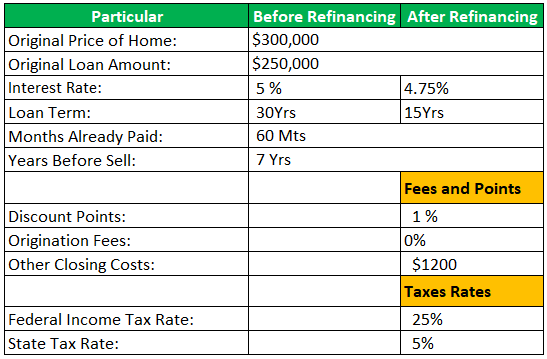## Accounting for Closing Costs on Business Loan Refinancing
**Introduction**
Refinancing a business loan can be a strategic move to secure better terms, consolidate debt, or unlock equity. However, it involves various expenses known as closing costs. Understanding how to account for closing costs on business loan refinancing is crucial for accurate financial reporting and tax calculations. This comprehensive guide will provide a step-by-step approach to the accounting process.
## Types of Closing Costs
A range of costs are typically incurred during business loan refinancing, including:
* **Origination fees:** Charges assessed by the lender for processing and underwriting the new loan.
* **Appraisal fees:** Costs of obtaining an independent valuation of the business or its assets.
* **Title search fees:** Expenses associated with conducting a title search to ensure the property used as collateral is legally clear.
* **Survey fees:** Costs for surveying the property used as collateral to verify its boundaries and dimensions.
* **Attorney fees:** Payments for legal services rendered during the refinancing transaction.
* **Recording fees:** Charges for recording the new loan documents with the relevant government agency.
* **Document preparation fees:** Expenses for drafting and reviewing loan agreements and other legal documents.
* **Credit report fees:** Costs incurred for obtaining credit reports on the business and its owners.
* **Escrow fees:** Payments made to a third-party escrow agent who holds funds and disburses them as instructed.
## Accounting Treatment
The accounting treatment for closing costs on business loan refinancing depends on their nature and substance.
**Capitalization**
* **Long-Term Assets:** Closing costs that increase the value or extend the useful life of long-term assets, such as appraisal fees or survey fees, should be capitalized and added to the cost basis of the asset. These costs are amortized over the asset’s useful life.
* **Loan Acquisition Costs:** Origination fees and other costs directly related to obtaining the new loan are amortized over the term of the loan. These costs are considered intangible assets with a limited useful life.
**Expense Recognition**
* **Current Expense:** Closing costs that do not qualify for capitalization, such as attorney fees, recording fees, and document preparation fees, are recognized as expenses in the period incurred. These costs are recorded on the income statement as “Loan Refinancing Costs” or a similar expense account.
**Procedural Steps**
To account for closing costs on business loan refinancing, follow these steps:
**1. Identify and Classify Closing Costs**
Carefully review the loan documents to identify all closing costs incurred. Classify them as either capitalizable or expense-related.
**2. Capitalize Long-Term Asset Costs**
Allocate the capitalizable closing costs to the appropriate long-term assets and amortize them over their useful lives.
**3. Amortize Loan Acquisition Costs**
Calculate the loan acquisition costs and create an amortization schedule to allocate them as expenses over the loan term.
**4. Record Current Expenses**
Recognize the expense-related closing costs on the income statement in the period incurred.
**5. Document and Maintain Records**
Retain all documentation related to the closing costs, including invoices and receipts, for audit and tax compliance purposes.
## Tax Implications
The Internal Revenue Service (IRS) allows businesses to deduct loan acquisition costs and current expenses associated with business loan refinancing. The amortization of capitalized closing costs is treated as depreciation.
* **Loan Acquisition Costs:** Amortized over the loan term and deducted as interest expense.
* **Capitalized Closing Costs:** Amortized over the asset’s useful life and deducted as depreciation expense.
* **Current Expenses:** Deducted in the year incurred on the income statement.
**Note:** Consult with a tax professional to ensure accurate tax treatment of closing costs in accordance with applicable tax laws and regulations.
## Best Practices
* **Negotiate Closing Costs:** Review and negotiate closing costs with the lender to minimize unnecessary expenses.
* **Plan for Expenses:** Include closing costs in the financial projections and cash flow planning for the business loan refinancing.
* **Maintain Accurate Records:** Keep meticulous documentation of all closing costs for accounting and tax purposes.
* **Consider Tax Implications:** Consult with a tax professional to optimize tax deductions related to closing costs.
* **Seek Professional Advice:** Engage with accountants or financial advisors to ensure proper accounting and tax treatment of closing costs.
## Conclusion
Accounting for closing costs on business loan refinancing requires a thorough understanding of their nature and classification. By following the steps outlined in this guide, businesses can accurately record these expenses and comply with applicable financial reporting and tax regulations. Proper accounting and tax treatment of closing costs can enhance financial transparency, optimize tax deductions, and contribute to sound financial management.
